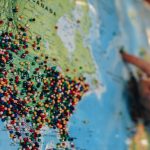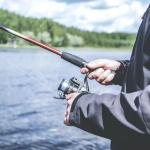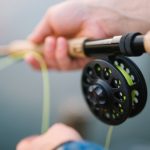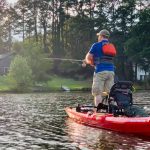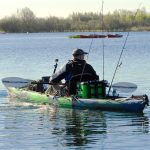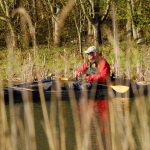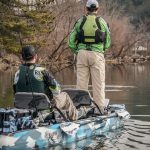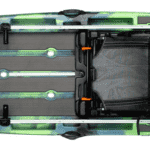Looking for the best kayaking spot? This interactive map will let you choose your location and narrow down all the paddling options in your area.
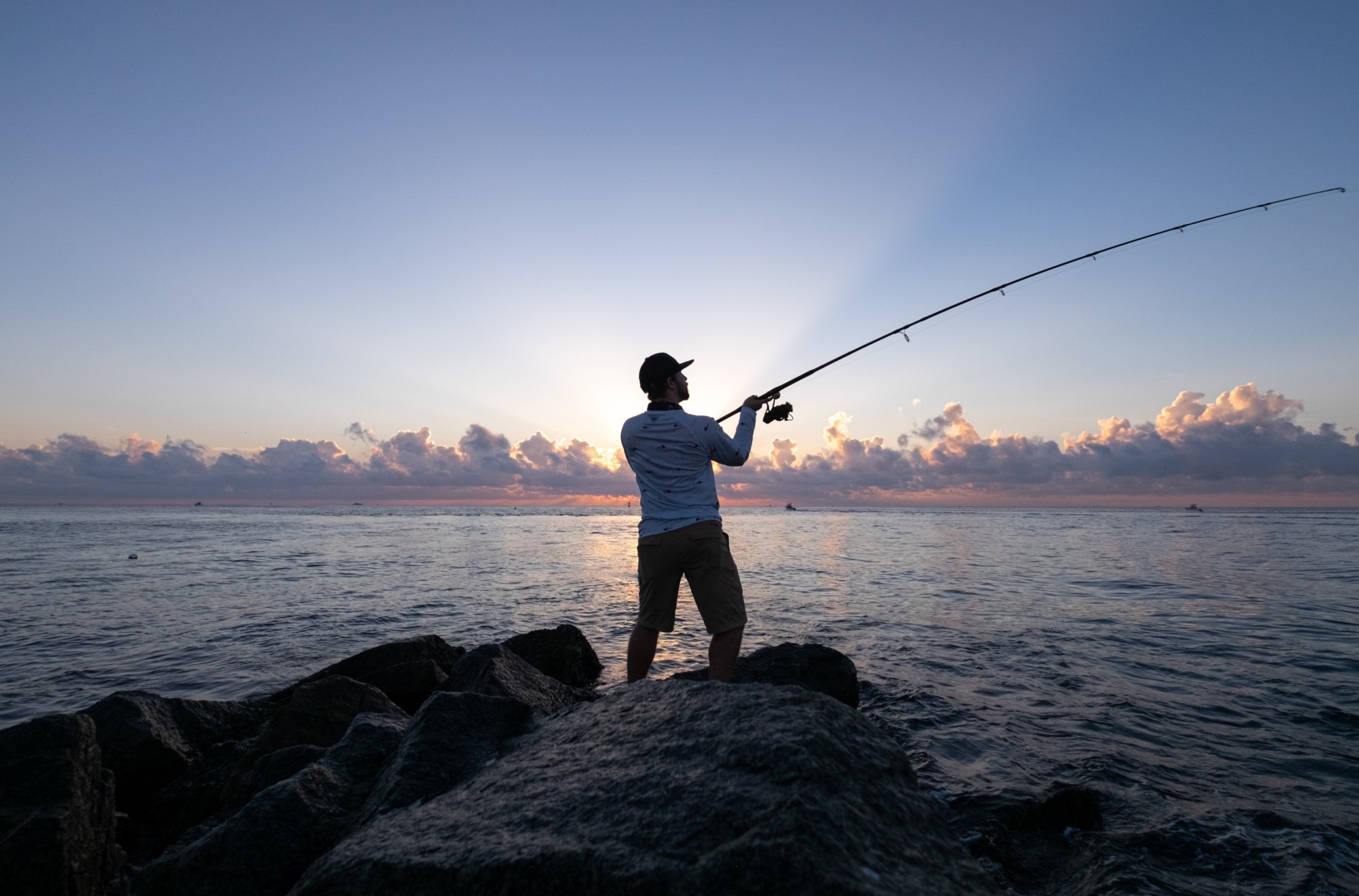
Wouldn’t it be awesome to know exactly where to fish near me every time?
No more hoping you get the right spot or trying and failing again and again.
We’ve got the best tool to help you get to the best fishing spots in your area: an interactive map that will guide you to every secret and hidden hotspot around.
Right from your phone or laptop, you’ve got access to a complete map of the U.S. featuring the best locations for match, pleasure, and deep sea anglers to cast out their lines.
Plus, I’ll share additional resources and information below that will make preparing for your next fishing trip a hassle-free experience.
Get ready for a game-changing addition to your fishing gear!
Welcome to the Interactive Map for Fishing Near Me
There was a time (not long ago) when I spent hours poring over Google Maps (or, years ago, MapQuest and Yahoo! Maps) in search of the perfect fishing spot.
I’d study the lakes and rivers near my home (in the interior of British Columbia), trying to figure out where I could go fishing next. In those days, it tended to be very hit or miss—I’d head out at the wrong time of day, or even pick the wrong season for the wrong fish.
Now, I’m not only a more advanced angler, but I’ve got access to this truly amazing interactive map (created and maintained by the great people of The Recreational Boating & Fishing Foundation)!
The map allows me to search for fishing spots by:
A) Exploring my location, so I can look for the best recommendations of locations in and around my city.
B) Exploring the entire U.S., so I can find the best spots in the states, counties, and cities where I’ll be visiting.
It’s very easy to use, too. You can either:
- Zoom in on your location/destination (using the provided “+” and “-“ buttons, or by scrolling your mouse)
- Type into the search bar your city or state
Anywhere I go, I can just log onto the interactive map and search its database for the best fishing spots. If I want to stay close to home for an afternoon fishing trip, I can explore my location and expand as far outward as I’m willing to drive on a weekday. Or, if I’ve got a long weekend fishing trip in the works, I can look beyond my immediate vicinity and search for better spots elsewhere.
But the “map” of it all is just the beginning.
The “interactive” aspect is truly game-changing for anglers like me!
Every dot on the map is a destination, but when you click on the dots, you’ll be given access to a lot of information about that specific place, including:
What specific fish species are located in the area. When you find a spot that looks appealing, you can click on it and get an in-depth breakdown of which fish are common to the area. That way, you’ve got all the information you need to prepare the right bait, hooks, spoons, weights, lures, and other gear before you head out fishing. (Note: You can actually use the map to filter locations according to your desired species of fish.)
Recently logged catches. The map displays both reviews and photos from users who have fished at that spot, and you can see what fish were caught and in what size. Plus, a lot of the users share handy tips that will help you when you get out fishing in that same spot.
Fishing forecasts. You want to find out what the best time of day is to catch the fish—also known as “bite times”. Each location will feature fishing forecasts (some with only the basics, but many with more detailed information added by locals/regulars) that will help you plan for the most effective timing of your trips.
Weather forecasts. The app pulls in data from local weather services so you can see what the weather is currently like in that area, as well as what it will be like in the days to come. That’s incredibly useful for planning a fishing trip!
New bodies of water. The locals will know of rivers, lakes, inlets, and estuaries that you’re not familiar with, but which will be excellent fishing spots. You can find out all sorts of cool new-to-you locations by searching the area on the interactive map. Heck, it’s likely you’ll find new spots even in your area. There’s always some well-kept secret or little-known fishing area that you can learn about.
Directions. A lot of the best fishing spots are located (literally) in the middle of nowhere. Getting there on your own isn’t easy, so the map makes sure to include maps and instructions on how to reach the destination. (Note: It may also include details on whether you can reach it with any vehicle, or if you need a specialized 4×4/offroad vehicle to make it up/down some steep or narrow dirt trail.)
Other locations important for anglers. This includes:
- Bait shops near me
- Fishing license vendors near me
- Kayak and paddleboard rentals near me
- Boat charters near me
- Fly fishing shops near me
- Fishing and sports gear shops near me
- Hunting shops near me (if you plan to combine your fishing trip with some hunting)
You’ll also find out if the waters are Marine Protected Areas, inaccessible to certain types of boats, or feature some important/cool/beautiful place of interest that is worth visiting while you’re out fishing.
Really, the sky is the limit when it comes to using this map. The more you use it, the more powerful you’ll find it can be. Everything from the reviews to uploaded photos to fish and weather forecasts to the details on the locations will help you plan your trips smarter and be prepared for anything.
And the best part: it’s totally free! The interactive fishing map is provided by The Recreational Boating & Fishing Foundation, a non-profit organization dedicated to increasing participation in boating and recreational angling.
What Kind of Angler Are You?
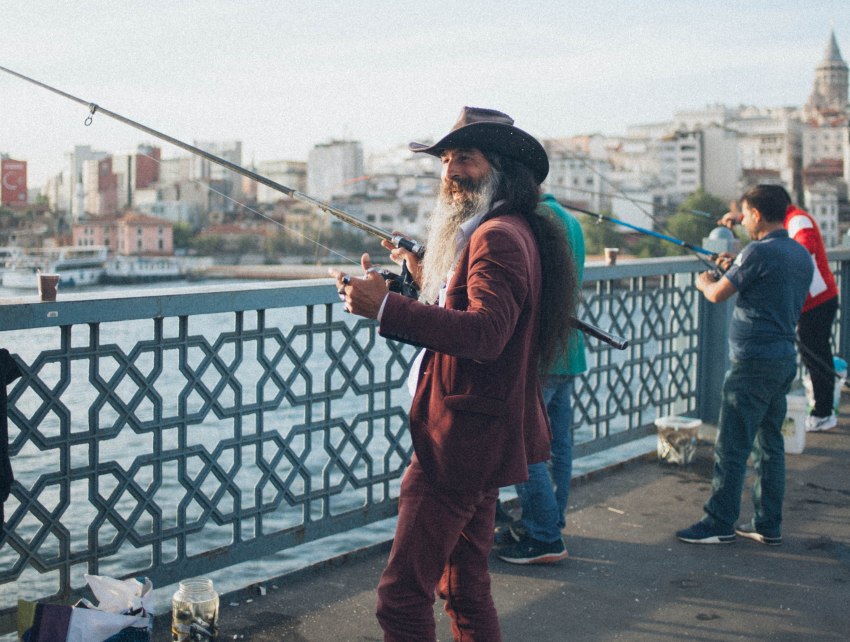
When searching for “fishing near me”, you have to take into account your fishing style:
● Match angler. Maybe you’re trying to catch fish for points, or you’re targeting fish for their weight (to catch the biggest prize around). You’ll have to follow the rules of whatever match, contest, or competition you’ve entered, which will guide how you plan your fishing trips, what you pack, and even where you fish.
● Pleasure angler. For you, it’s all about the enjoyment. You’re fishing for recreation and relaxation. Sure, you want to catch a big fish, but if you don’t catch anything, it’s not the end of the world. You still had a great time out on the water with your buddies (or solo fishing is cool, too!), and the hours you spent casting and reeling in aren’t wasted because you didn’t haul in anything.
● Angling for supper. Ahh, the age-old practice of catching your dinner! Whether you’re out on a camping/hiking/fishing trip needing a hearty meal at the end of the day or just want to bring home a few fish to cook for dinner, you’re there to catch something. The fishing itself will be enjoyable and relaxing, but leaving empty-handed isn’t an option. This means planning a trip to a spot where you know you’ll find enough fish for a proper meal.
● Catch and release angler. You love the rush of catching something, of feeling the line pull tight and struggling against the strength of your fish (and who doesn’t love that?). But ultimately, that’s all the thrill you want. You don’t want to deal with the process of killing, gutting, scaling, and cooking the fish, so it’s more fun to reel in a prize catch, then (carefully!) set it free to keep living its little fishy life.
● Deep sea angler. There’s something truly spectacular about deep sea fishing, about sitting out on the open ocean and knowing that somewhere in the waters below you are enormous fish (like marlin and bluefin tuna) just waiting to be caught. Maybe you’re in it for the prize, the thrill of the catch, or just the simple pleasure of spending a day out on the sea. Whatever the case, no lake or river could ever offer the exhilaration of the ocean under the bright sky.
● Adventure angler. Adventure anglers enjoy fishing, but fishing is just a part of the adventure overall. Maybe you’re fishing at the end of a long day of paddling your kayak or canoe upriver, portaging between rivers and lakes, or hiking along a rough canyon trail. You might love kayaking or boating upriver to find a cool hidden fishing or hunting spot. Adventure can take many forms, and you love them all, including but not limited to fishing.
What type of angler you are will determine what sort of locations you search for fishing near me, and how you plan your trips out onto the water.
Ocean Fishing Near Me
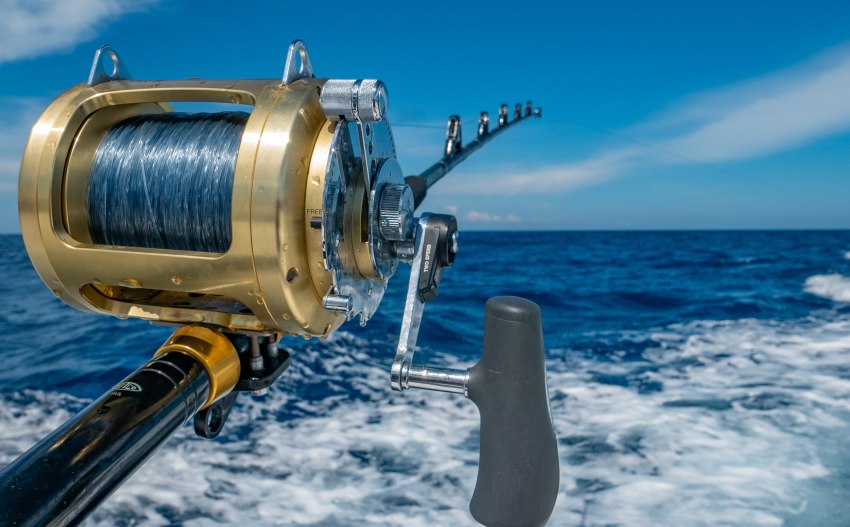
Ocean fishing requires a lot more than just a boat, a rod, and some bait. You’ve got to be prepared for adverse weather conditions, unpredictable currents, tougher fish, and larger boats (more prone to malfunction)—all while being far away from land and a quick rescue.
A lot more investment and preparation goes into ocean fishing. You’ve got to not only buy sturdier equipment capable of handling the larger, stronger ocean fish, but also resistant to the deterioration caused by exposure to saltwater. You’ll also need a larger, more powerful boat or sturdier kayak, plenty of fuel, and emergency gear (PFD/lifejackets, an inflatable raft, backup batteries/engine parts, and the list goes on). Then there’s the investment of time you have to spend studying the species of fish you want to catch, as well as the local currents.
There’s so much to love about ocean fishing, but it’s critical that you’re prepared before you head out on the water!
River Fishing Near Me
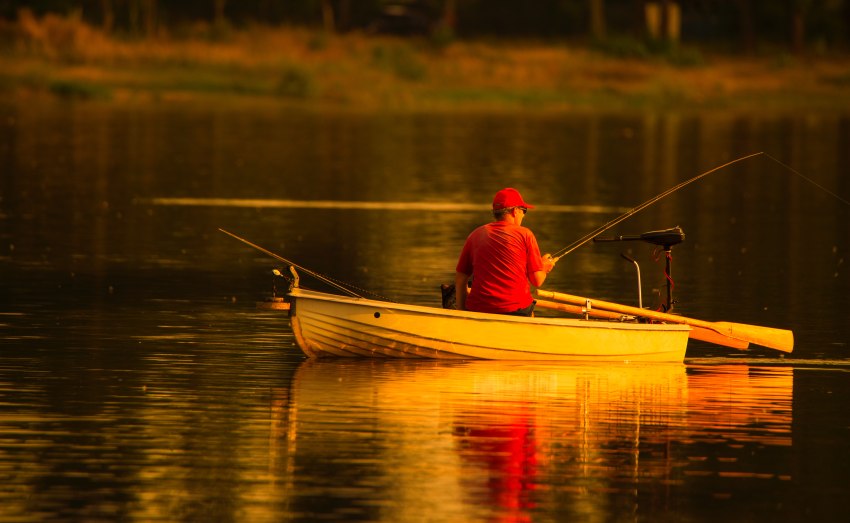
River fishing can be an absolute blast, whether you’re on a kayak, canoe, or boat. Because the current is carrying you downstream, you can kick back and enjoy the ride, with your hook dangling in the water all the way. Rivers also have easily spotted places to catch fish—typically, the fish will congregate anywhere there is a break in the current or offer an “ambush point” to catch their food. And river fish are, by nature, more aggressive, so they tend to take the bait quicker than fish living in still waters.
But there are some challenges to river fishing, too.
- Flowing current. You will find it exponentially harder to stay in one place when riding the river’s current. You may need a kayak anchor or a rope to tether you to a tree on shore.
- Traveling downstream. It’s easy traveling downstream on the current, but exhausting to try and paddle back upstream after a day of fishing. Unless you’ve got someone to drive you to a launch point far upstream (to kayak your way downstream to your final pickup spot), you’ll have to factor this extra effort into your trip.
- Underwater dangers and hidden obstacles. You may have to deal with everything from strainers to sweepers to underwater rocks to fallen trees, which can put you at risk if you’re focused more on the fishing than paying attention to your surroundings.
Make sure to take these factors into consideration if you’re planning to enjoy some fishing on a river near you.
Lake Fishing Near Me
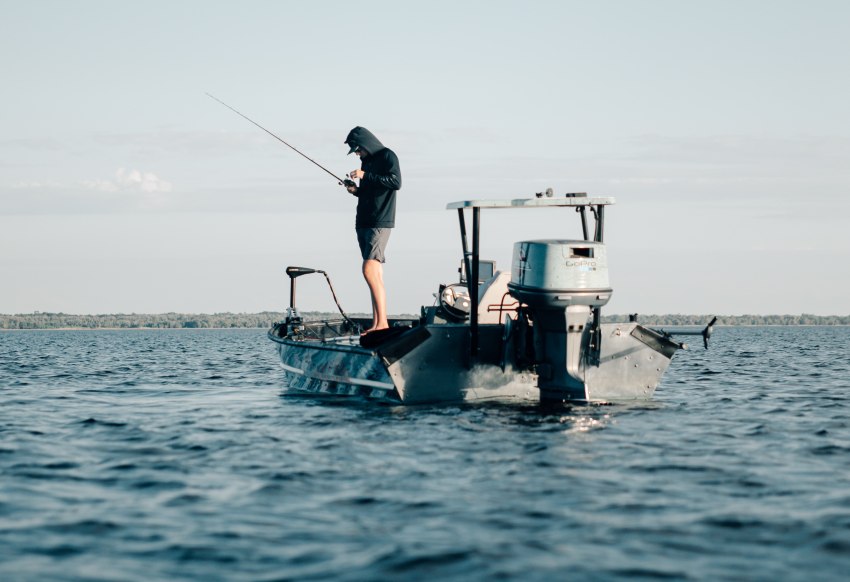
Lake fishing is ideal for recreational anglers who just want to enjoy a day out on the calm water, regardless of whether or not they bring home supper. There’s plenty of places where fish can hide, and the lakes are often deep enough that the fish feel safe all throughout the lake.
Of course, the challenge with calm-water fishing is that the fish tend to be less aggressive—and thus less likely to take the bait. Finding the spots where the fish like to congregate can be tough, too, even with a fish-finder. You may have a harder time catching those big prize-winners or filling your bucket with enough fish to bring home for dinner.
Kayak Fishing Near Me
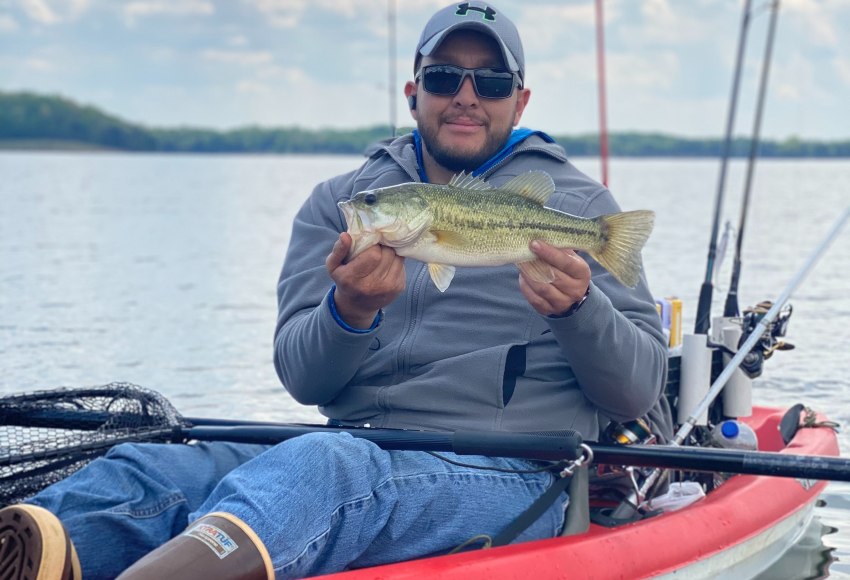
The beauty of kayak fishing is that you can go anywhere! Boats and engines need a certain amount of water to operate safely, and the depth of the keel/hull means there are a lot of shallow waters that are impossible to navigate. With a kayak, however, you really only need about 2 feet of water (less, if you don’t have a fin/skegs). This makes it easy to navigate up small, narrow, shallow inlets and find those secret spots where the fish are hiding closer to shore.
A lot of freshwater fish tend to stay nearer the shore, which is why they’re commonly caught by shore fishers. These species include:
- Rainbow trout
- Catfish
- Crappie
- Bluegill
- Largemouth bass
- and many more…
With a kayak, you’ve got the advantage over shore fishers because you can get out on the water farther than they can cast their lines. But because you’re a silent-running watercraft, there’s no engine noise to scare away the shallow-water fish.
Plus, you get to spend a few hours/an entire day paddling your kayak. It doesn’t get better than that!
How to Find the Best Fishing Near Me
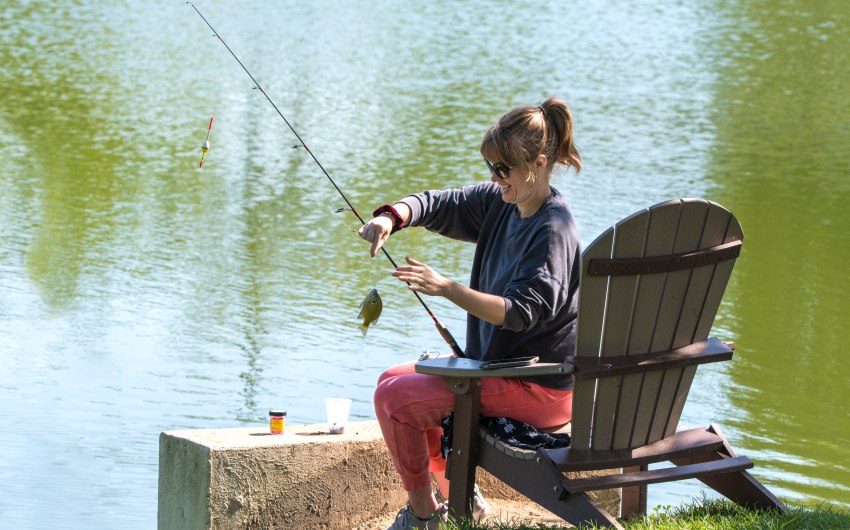
Let’s be honest: we’ve all spent days (or even weeks) trying lake after lake and river after river attempting to find the best fishing spots.
It can be tough to get it right, and conditions can change so quickly (as you’ll see in the next section) that what is the “perfect” fishing spot one day can be a dry hole the next. Or maybe what used to be the prime location has now been over-fished and there’s nothing left to catch.
If you want to eliminate time waste and make the most of every fishing trip, the best thing to do is research, research, research. The more you learn, the easier it will be to find the spots that consistently deliver.
Where can you research? There are a few excellent sources of information to access:
The Interactive Fishing Map
The map we shared above is one of the best sources of information around! It’s not only maintained and updated by The Recreational Boating & Fishing Foundation, but an entire community of dedicated anglers is constantly adding new data that will help you find all you need to know about the many, many fishing spots near me.
U.S. Fish and Wildlife Service
The U.S. Fish and Wildlife Service is the government body dedicated to the preservation and conservation of wildlife, not just national parks, but also the plants and animals that make our country so beautiful and exciting.
On their website, they have a simpler version of the interactive map, one that displays all 296 national wildlife refuges, 35 wetland management districts, 18 national fish hatcheries, and the other U.S. Fish and Wildlife Service lands and waters where fishing is available.
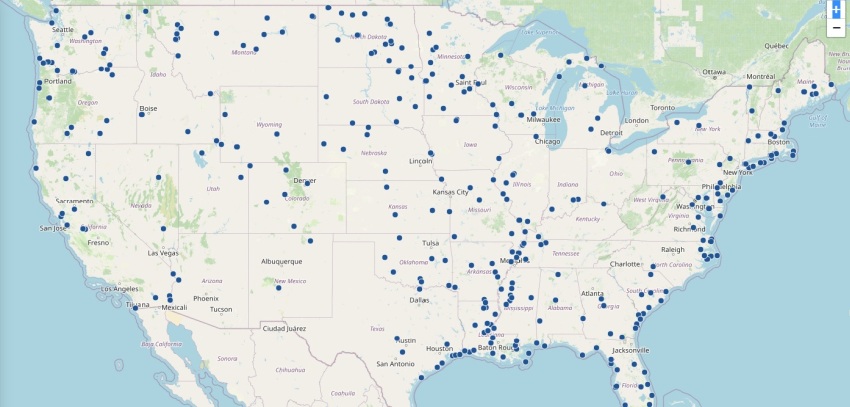
Access the map right here, and use it as a springboard to help you start planning your next trip. (Though be warned: further research will be required, because this map only shows you the location and directions, but no additional details.)
Fishing Forums
Fishing forums are an amazing resource that you’d be wise to access regularly!
These forums are populated by anglers of all skill levels, and from all around the country, continent, and even the world. You can find an impressive amount of information on quite literally every aspect of fishing—from tips and tricks to gear recommendations to helpful advice to product reviews to suggestions on the best fishing spots.
A few of the best fishing forums include:
- Reddit’s r/Fishing
- World Sea Fishing (particularly useful for ocean/deep sea anglers)
- The North American Fly Fishing Forum
- SportFishing BC (ideal for anyone planning to fish in British Columbia, Canada)
- Boatless Fisher (suited to shore fishers)
Fishing and Boating Associations
Nearly every U.S. state and Canadian province is home to a fishing and/or boating association, organizations dedicated to providing information and resources that will encourage safe, responsible fishing practices. Whatever state you’re going to be fishing in, it’s always a good idea to use these associations in your research.
The good folks over at Sea-Ex have a great list of fishing clubs and associations in the United States, while Street Directory has a list of fishing clubs in Canada.
Locals/Word of Mouth
No one knows local fishing spots like the locals! People who spend their lives fishing in the same handful of rivers, lakes, and streams will be an amazing resource to help you find the best fishing spots. And because they’re out on the water regularly (literally all fishing season long, in many cases), they’ve got up-to-date information on where the fish are biting and which spots are dry holes.
Fishing Apps
Thanks to the popularity of fishing, there are a lot of smartphone apps developed (for both iOS and Android) to help you find the best fishing spots.
A few of the best are:
- Fish Angler, which provides a 7-day weather forecast, marine maps, a logbook, and access to a vast virtual community of fellow anglers not just in the U.S., but around the world.
- Fishidy, which has a waterway database featuring more than 200,000 bodies of water (180,000 saltwater and 20,000 freshwater) where you can find fish, along with fishing and weather forecasts, catch-logging, marked hotspots, and underwater structure identification.
- FishBrain, which features hotspots where fish are biting now, species recognition tools to help you identify your catch, crowdsourced bathymetric data, and even recommends the best baits and lures for specific fishing spots.
- FishTrack, which is particularly useful for deep-sea sport fish anglers. It includes a broad selection of data, including surface temperature charts, tide/current maps, moon phase data, weather productions, and bathymetric data.
Download these onto your smartphone to make planning your next fishing trip just that much easier.
Factors to Consider When Considering Fishing Spots Near Me
Popularity
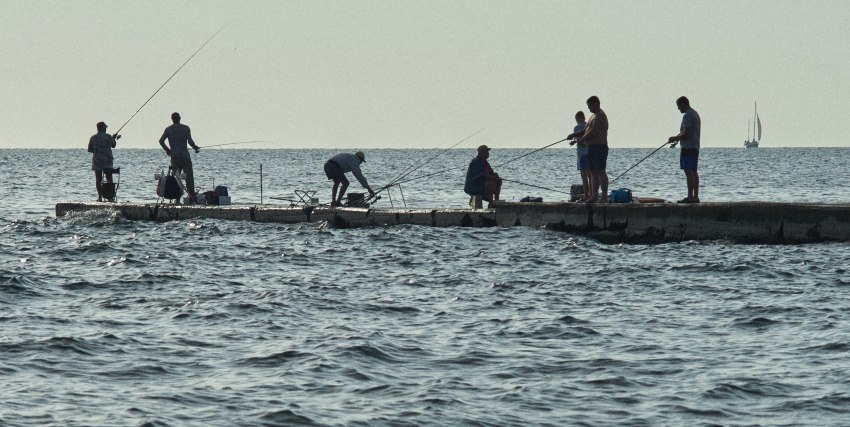
You may not want to choose a fishing spot that is too popular. If it’s frequented by a lot of other anglers, it may be overfished and depleted, or the presence of lots of boats and watercraft may scare away the fish.
That’s not to say that you have to find some remote fishing hole where no one ever goes, way out in the middle of the forest. Just be aware that the more popular a fishing spot is, the harder it will be to catch fish there.
Season
The success of your fishing trips will vary from season to season.
For example, during spring, you’ll find that the fish tend to be most active in the afternoons and evenings during the later spring months when bugs are most plentiful near the surface and shore.
During the summer, you’ll have plenty of fish to catch, so long as you aren’t fishing during the peak heat hours of the day (when the fish are likely lounging in the cool depths of the lake, river, or ocean). You’ll find the best times to fish during the hotter summer months is early in the morning and later in the afternoon when the heat isn’t too intense.
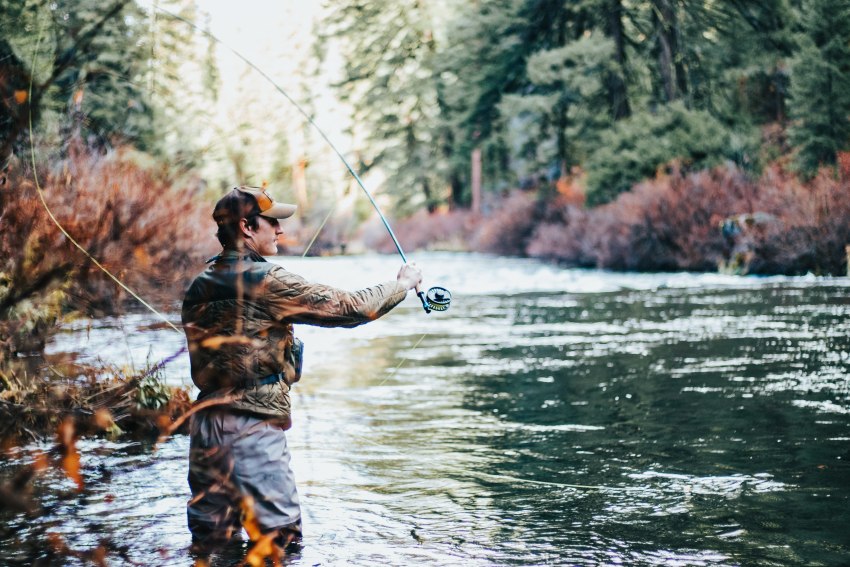
Fall fishing is often inconsistent, and you’ll find that fish are typically only out and about in the late afternoon/evening. However, if you can find a good spot, the fishing can be very good for a few weeks while the fish are eating en masse in preparation for the leaner winter months.
Winter fishing is most often associated with one type of fishing: ice fishing. If that’s not your thing, leave your fishing rod tucked away in preparation for the spring thaw.
Accessibility
Accessibility is definitely a factor to consider!
We’ve all heard of those amazing fishing spots that are a 6-hour drive, 4-hour hike, and 2-hour boat ride away. As spectacular as those are, they’re just not the best choice for a busy professional who can really only escape for a few hours of fishing on a weekday or the occasional weekend.
Sure, you should keep these places in your back pocket when you want to make a full adventure of it. For the rest of the time, though, find someplace that is easily accessible—a short drive or hike from town. That way, you can get out fishing a few times a week without having to spend hours commuting back and forth.
Legality is another aspect of accessibility to factor in. If you’re not legally allowed to be on that land (private property or government/preserved lands), it’s not ideal for fishing.
Weather

Both warm and cold fronts can present great opportunities for fishing.
When a cold front is coming in, fish will often feed even more than usual in anticipation. You can catch a lot of fish before the cold front rolls in. After, though, your chances of catching anything will be low until the weather warms up.
With a warm front, the surface of the water warms up, so fish can feed more. This means they’ll be more active and closer to the surface, so likely easier to catch. Just be aware that they tend to stay in the depths during the peak heat hours, so plan to fish in the mornings and afternoons/evenings.
Windy days are great for fishing, because the winds push water (and small game with it) toward the shore. Always fish into the wind, casting your lure in the direction the wind is blowing. That will give you the best chance of catching game fish.
Cloud cover make the fish bolder, encouraging them to venture away from safe structures and thus easier to catch. Light rain during warm weather can wash a lot of insects into the water, offering tempting food for fish. You’ll also be blurred by the rain hitting the water’s surface and thus harder for the fish to spot.
Heavy rain, however, isn’t ideal for either an angler or paddler. It stirs up mud, making it harder for the fish to navigate, hunt, and breathe. Better stay under cover or safely indoors until the rain passes.
Skill Level
Your skill level will definitely play a role in your fishing trips. If you’re a seasoned paddler but new to fishing, you probably won’t tackle prize-winning fish or any truly fierce species that put up a struggle. You may not know all the tips and tricks to find fish where they’re hidden or use the right lures/spoons/bait to lure them toward you.
On the other hand, a seasoned angler probably won’t be content with fishing in any old pond. You’ll probably want to find a waterway that offers a suitable challenge for an experience fisherman (or woman) like yourself.
Species of Fish
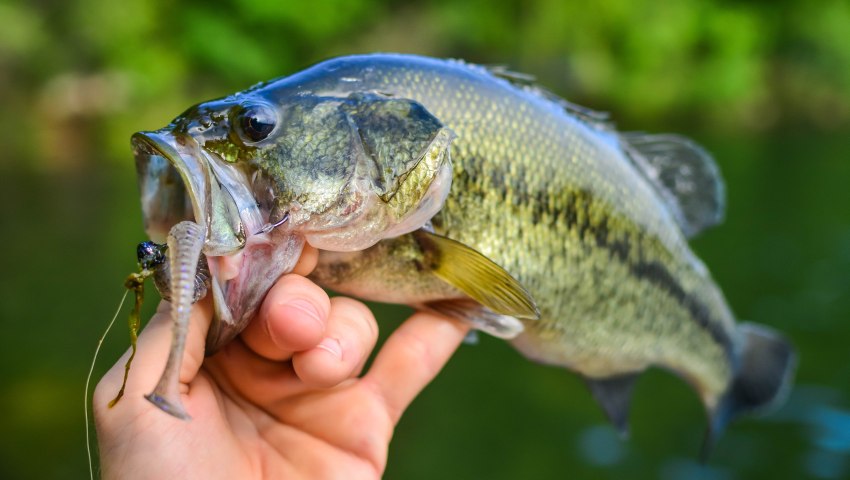
Every species of fish requires a slightly different approach. Some will be attracted to bright, shiny spoons, while others will need live bait to catch their attention. Some prefer deep, cold water while others stay close to the surface.
The species of fish will vary depending on your location, which will also determine how you approach the fishing trip. If your gear is limited, try to find a fishing spot stocked with species that you’ve got the right equipment to catch. For those with a broader selection of gear, there are more options to choose from.
Watercraft
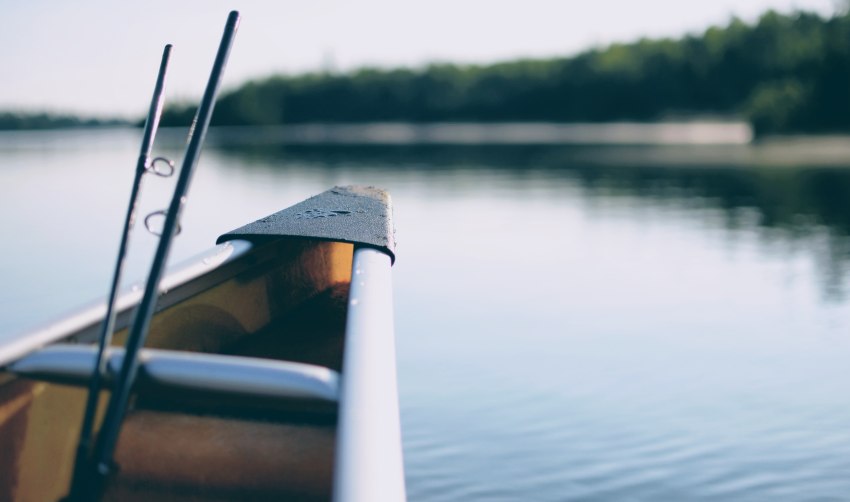
There are four basic watercraft types you can use for fishing:
Paddleboard – Paddleboard fishing is better suited for catch-and-release and recreational anglers. The paddleboard isn’t stable enough to withstand the thrashing of a larger fish, and you have only limited space/weight capacity to accommodate your gear.
Kayak/Canoe – With a kayak or canoe, you’ve got lots more options, and plenty of weight capacity and storage space for rods, bait boxes, tackle boxes, a cooler to store your catch, and the list goes on. Fishing kayaks are built specifically for wrestling with larger, fiercer freshwater fish, even some saltwater fish. They’re stable, sturdy, but portable enough that you can take them anywhere!
Small Boat – A small boat (powered either by paddles, a trolling motor, or a small electric/gas motor) will be great for fishing large lakes, traveling upriver to hidden fishing holes, or enjoying the coastal waters close to the shore. However, you typically need a trailer or boat-hauler to get them to and from the water, and they’re too heavy/unwieldy to easily portage between bodies of water yourself.
Large Boat – If you’re serious about deep-sea fishing, you’ll need a large boat (either your own or a charter) to carry you safely miles away from the shore. A powerful motor is an absolute must for combatting currents, high winds, strong tides, and the ferocious thrashing and fighting of big game fish.
Your destination will be largely determined by what type of watercraft you own and can transport.
For example, paddleboards, kayaks, canoes, and small boats are all great for lakes and large rivers, but you may only be able to take your kayak, canoe, and paddleboard up small rivers, inlets, or marshes. On the other hand, if you own a large boat, you can take it to any deep lake where there is a marina/pier/boat launch, and it’s great for offshore/deep-sea fishing, too.
Local Regulations
Every U.S. state and Canadian province requires you to obtain a fishing license or permit in order to fish. The regulations will change from state to state (sometimes even county to county), so it’s important that you research and find out what you need to do in your local area.
Luckily for us, the good people of the Recreational Boating & Fishing Foundation have put together a complete list of how to get a fishing license in each of the U.S. states (including Alaska and Hawaii).
They also have an interactive map that will help you get your license as easily as possible—all you have to do is click on the state of your choice (either your home or the destination of your fishing trip) and it will take you to the right website to apply for the license.
Gear
Finally, consider your gear.
If you’re accustomed to shore fishing, you might not have the right lures or sinkers for deep-sea or even middle-of-the-lake fishing. Or, if you’re a fly fisher, it’s likely you’ve got all lightweight fishing gear, which may not be tough enough to tackle stronger, feistier fish.
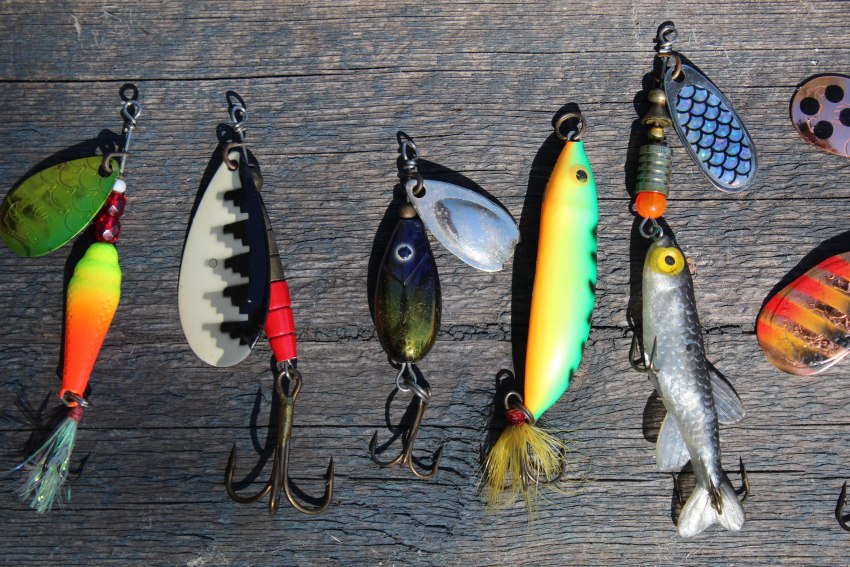
Some anglers will have all the fishing gear—multiple poles, a broad assortment of baits, lures, spoons, sinkers, and hooks—and will have no problem adapting their loadout for any destination. However, those who have only limited gear (targeting specific environments/species of fish) may be better off sticking with places they know they’re prepared to fish safely and effectively.
One very useful piece of gear to add to your loadout: a fish finder! Fish finders make it so much easier to locate and identify fish, not just telling you their location, but also how deep they are, how fast they’re swimming, and what species they are (in the more advanced devices). They can be game-changing for any angler who wants an edge when it comes time to actually catch something—for either the prize photo or the dinner plate.

